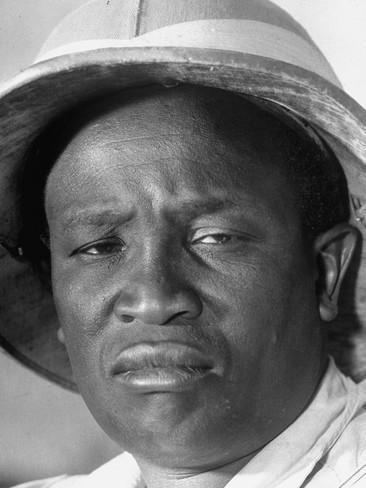Name Tshekedi Khama | ||
 | ||
Died 1959, London, United Kingdom | ||
Tshekedi Khama (17 September 1905, Serowe - 10 June 1959, London) was the regent of the Bamangwato tribe in 1926 after the death of Sekgoma II.[citation needed]
Contents

Background
In 1923, Khama III died and was succeeded by his son Sekgoma II, who died after serving only two years. The heir to the throne, four-year-old Seretse Khama, was not ready for the job of ruling the Ngwato and so his 21-year-old uncle Tshekedi Khama became regent of his clan on 19 January 1926. Khama had attended the South African Native College at Fort Hare between 1923-1925.
Reign as regent
Resident Commissioner Sir Charles Rey determined that no progress would be forthcoming as long as the people were governed by Tswana chiefs and proclaimed all local government officials answerable to colonial magistrates. The popular opposition, which people feared that it would lead to their incorporation into South Africa, was so great that Rey was ousted from his job and his proclamation annulled.[citation needed]
Opposition to Seretse's marriage
After the war Seretse Khama went to study in England where he met and married an English woman, Ruth Williams. Tshekedi Khama was furious at this breach of tribal custom, and the South African authorities, still hoping to absorb Bechuanaland into the Union, were strongly opposed. The British government blocked Seretse's chieftaincy and he was exiled from the protectorate to England. Bitterness continued until 1956, when Seretse Khama renounced his right to the tribal throne and returned with his wife to Bechuanaland.
